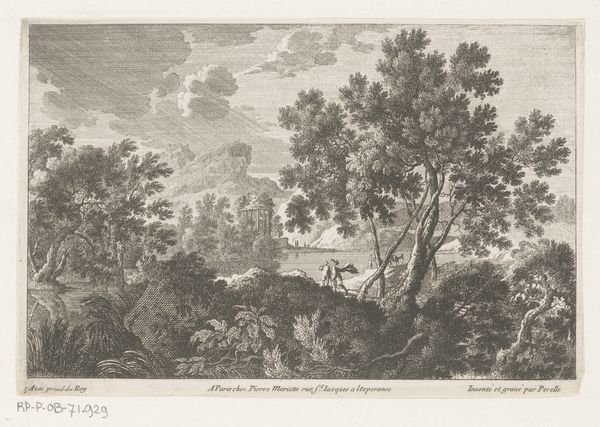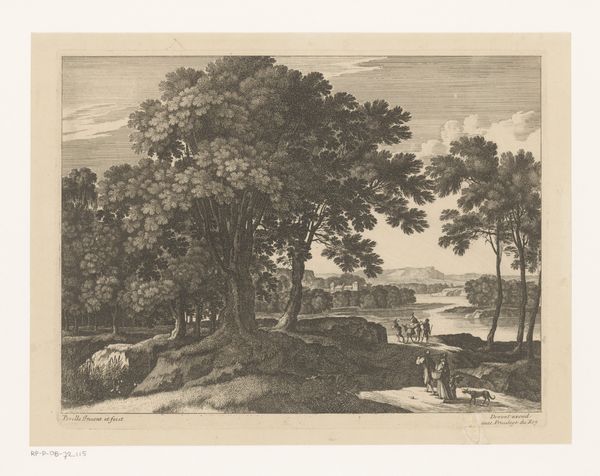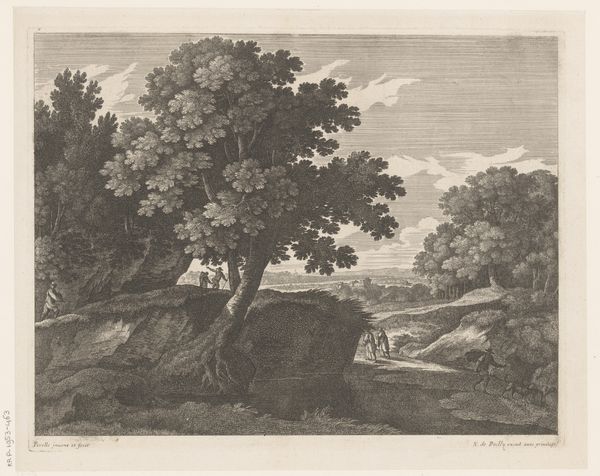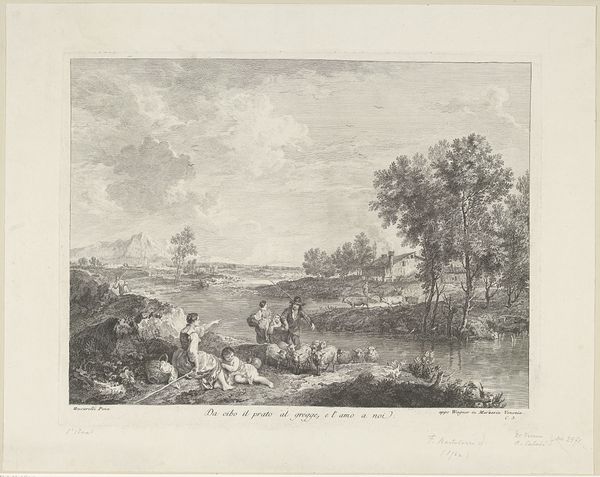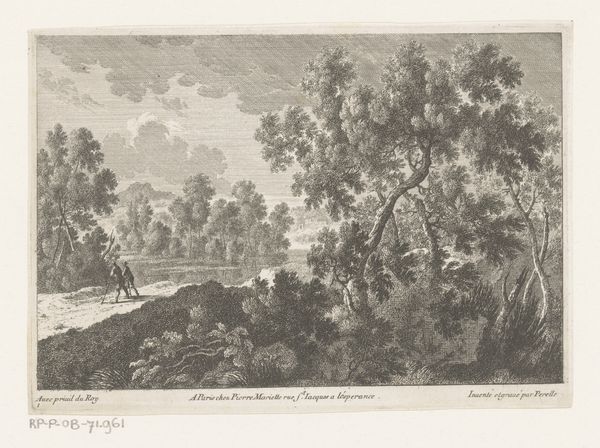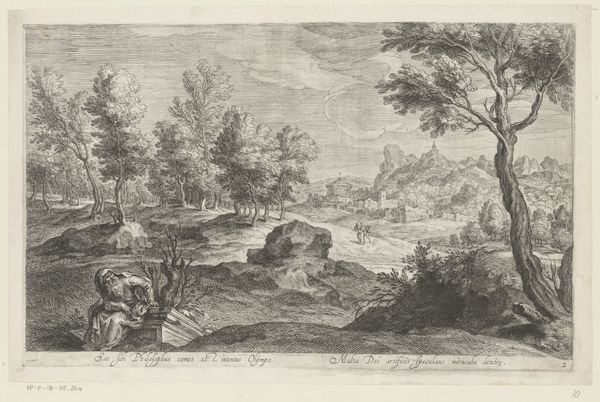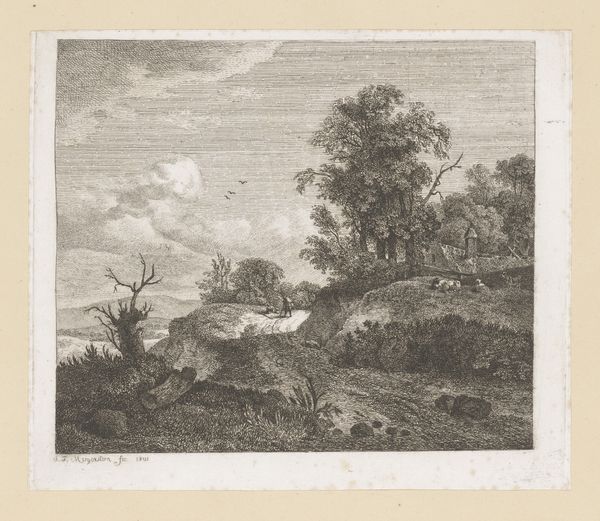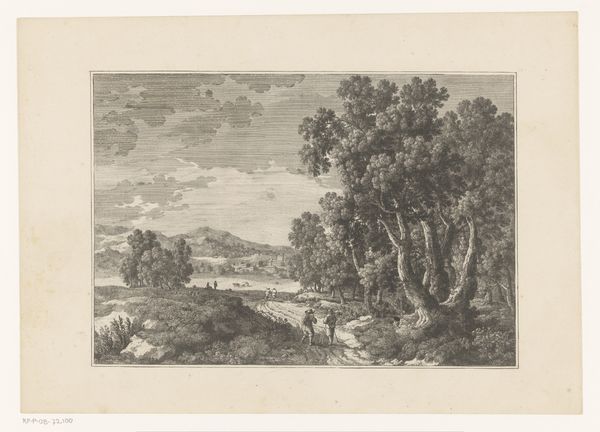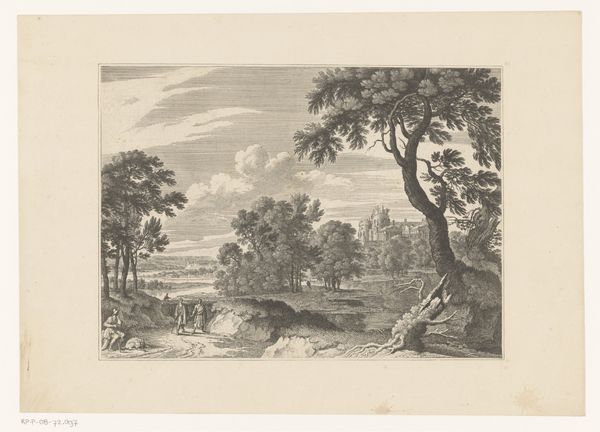
print, engraving
#
baroque
# print
#
landscape
#
genre-painting
#
engraving
Dimensions: height 165 mm, width 231 mm
Copyright: Rijks Museum: Open Domain
Editor: Here we have Nicolas Perelle’s “Landscape with Cattle Drinking in the Foreground," an engraving dating from around 1650 to 1695. It’s a very detailed pastoral scene, quite peaceful, but I'm curious about the social context of landscapes like these. What can you tell me about this work? Curator: It's intriguing to consider how landscapes like these gained popularity, especially among the rising merchant class. Prints made art accessible. Do you notice the compositional elements, the receding planes creating a sense of depth and distance? Editor: Yes, and the detail of the cattle drinking feels so... ordinary. Was this a reflection of changing social values? Curator: Precisely! These images weren't about religious or aristocratic power; they presented an idealized vision of rural life, a kind of bourgeois aspiration towards land ownership and leisure. Consider the placement of this print being sold ‘A Paris chez Nicolas Langlois’ a public role and appeal! Editor: So, the printing press democratized art and fueled new kinds of artistic expression and ownership. Were there academies dedicated to engraving like this at that time? Curator: Absolutely, this shows us not just the artistic style, but how prints helped shape public perceptions of nature, class, and even national identity in Early Modern Europe. Perelle's print is a window onto a transforming society. Editor: That is amazing. I learned so much from seeing art from a wider lens, considering class and politics. Curator: Yes, and from questioning, and opening our understanding about how social and artistic tastes interact!
Comments
No comments
Be the first to comment and join the conversation on the ultimate creative platform.
